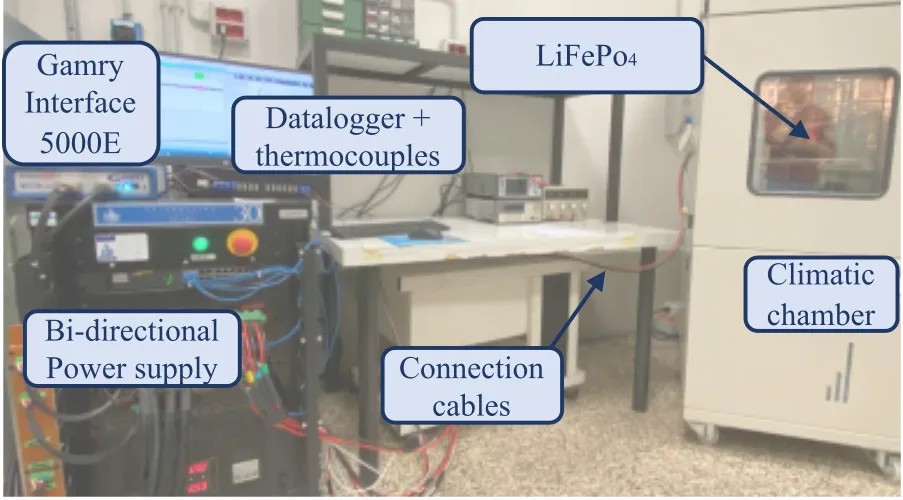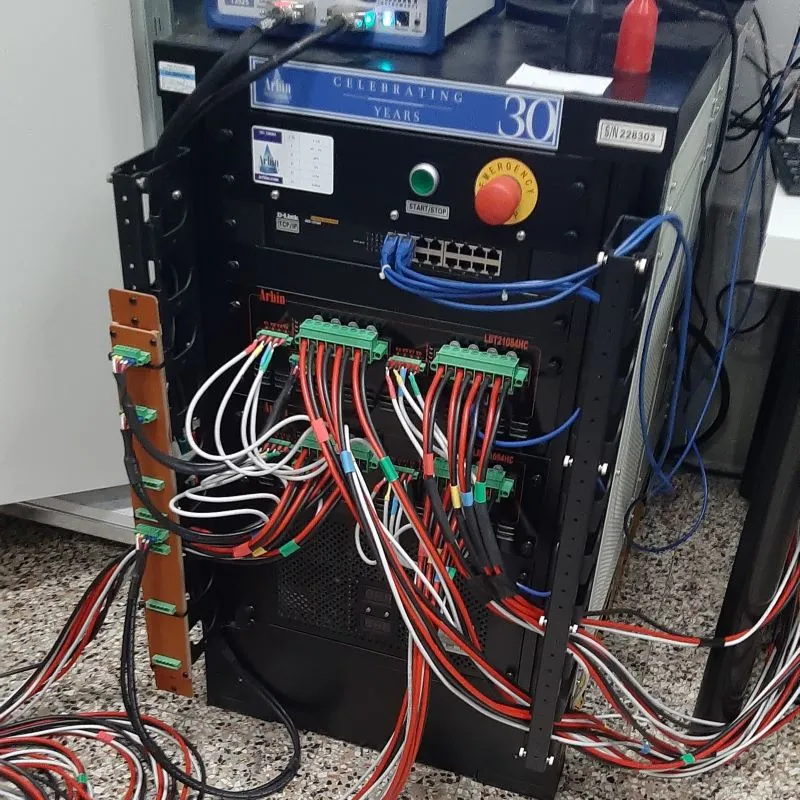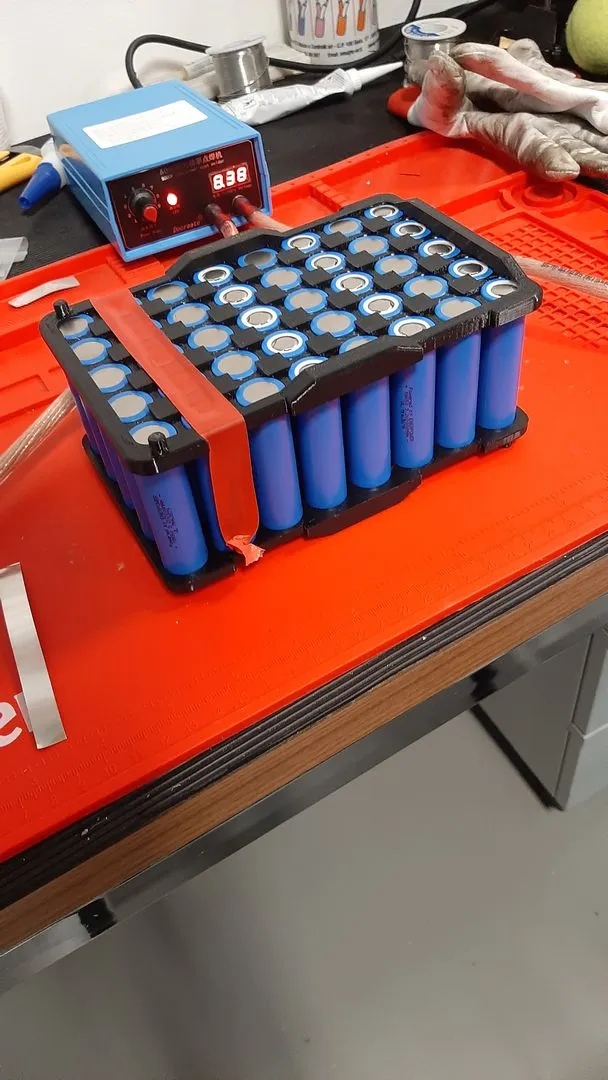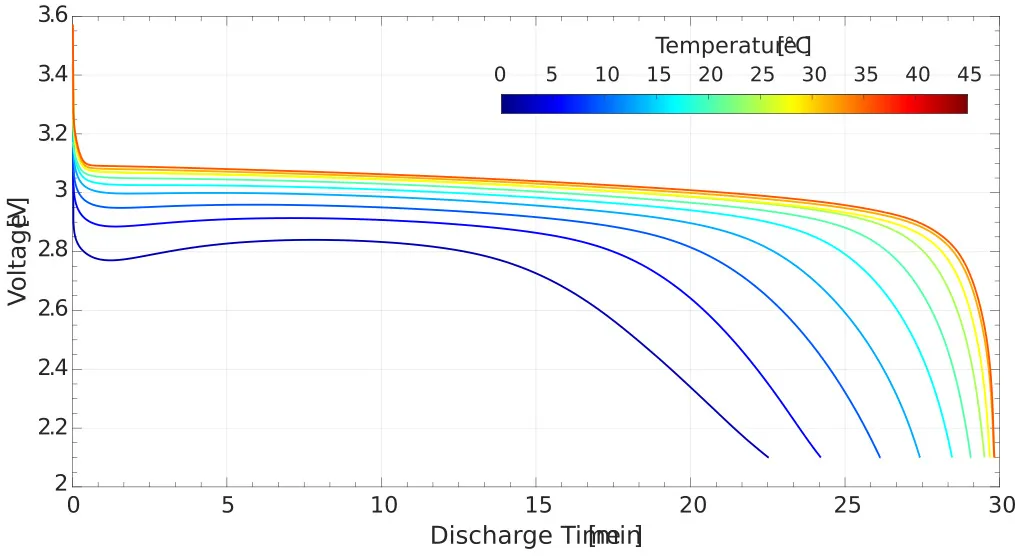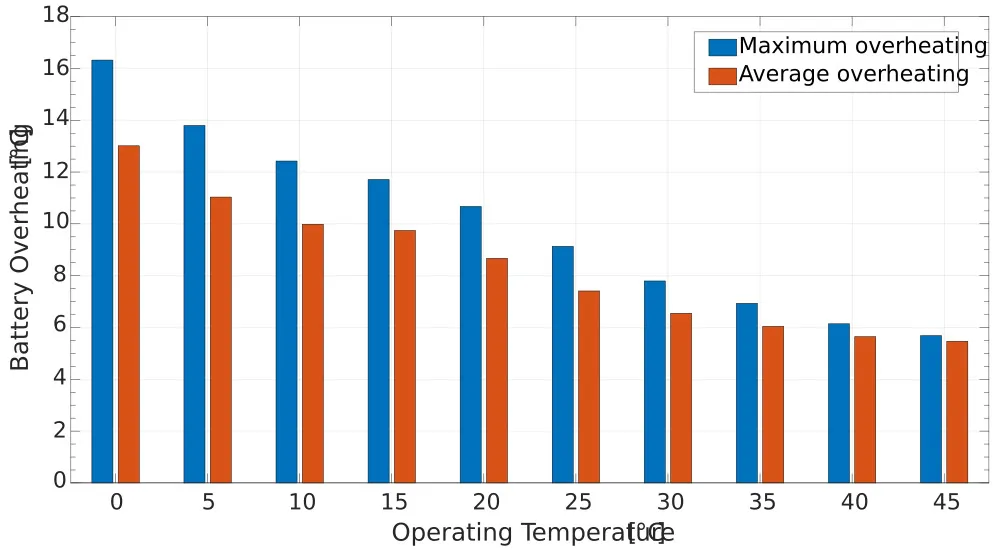Characterization of autonomous system's battery cells
Thanks to the collaboration with Prof. Ciani and Eng. Patrizi from the Department of Information Engineering (DINFO) at the University of Florence, it was possible to carry out a thesis project focused on the design of the battery pack powering the autonomous system of our vehicle. The work mainly involved the characterization of the cells that would be used, through climatic testing.
The goal was to evaluate cylindrical LiFePO₄ cells, known for their safety, longevity, and performance at high temperatures, by analyzing discharge duration, ensuring the power supply lasts for the entire trackdrive test (approximately 15–20 minutes), and the temperature rise under different environmental conditions and stress levels, particularly those close to actual race conditions (i.e., temperatures between 30 and 40 °C).
The instrumentation used included: A tester from Arbin Instruments, a device for Electrochemical Impedance Spectroscopy (EIS), an external temperature datalogger and a climatic chamber from Weiss Technik.
The test plan consisted of performing five consecutive charge/discharge cycles, at 1C (charge) and 2C (discharge), with EIS measurements between 100 mHz and 100 kHz between phases. The procedure was then repeated while increasing the temperature inside the climatic chamber by 5 °C steps, starting from 0 °C up to 45 °C.
Results
-
Charging phase: At 0 °C, charging is significantly slower (up to double the time) due to the quick transition to the constant voltage phase. However, charging time and stored capacity improve as temperature increases. Above 30 °C, the cells approach their nominal performance values.
-
Discharging phase: Discharge duration and average voltage increase with temperature, and the cells show more uniform behavior at higher temperatures. At lower temperatures, higher internal resistance leads to greater overheating.
-
Temperature: During discharge, overheating is greater at low temperatures, while negligible during charging.
These cells are therefore suitable for the intended application and typical usage conditions, provided that temperature limits are not exceeded, possibly with the aid of cooling fans.
The support of Professor Ciani’s research group was essential for planning the tests and using the software, climatic chamber, and data collection tools. This collaboration allowed us to find the best solution to safely and effectively power the autonomous system.
